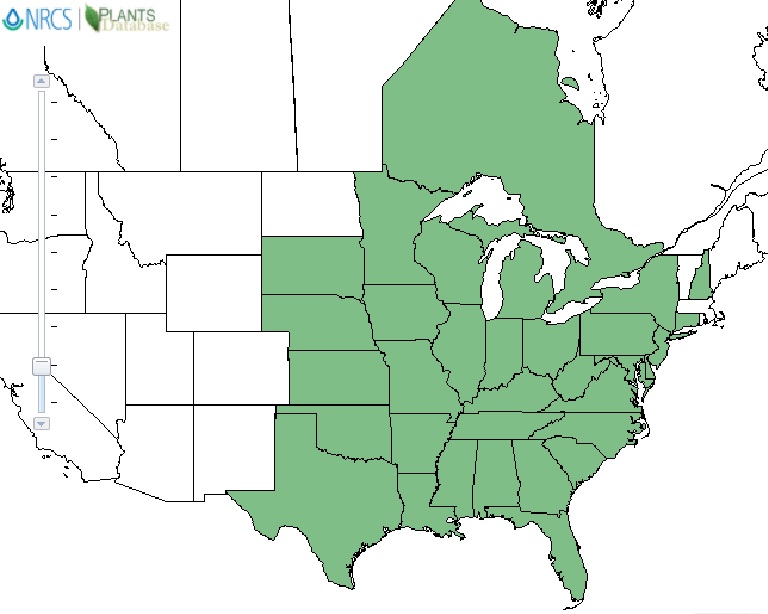Difference between revisions of "Smilax hispida"
| Line 24: | Line 24: | ||
==Description== <!-- Basic life history facts such as annual/perrenial, monoecious/dioecious, root morphology, seed type, etc. --> | ==Description== <!-- Basic life history facts such as annual/perrenial, monoecious/dioecious, root morphology, seed type, etc. --> | ||
| − | ''Smilax hispida'' is a monoecious perennial that grows as a shrub or vine.<ref name="USDA"/> In | + | ''Smilax hispida'' is a monoecious perennial that grows as a shrub or vine.<ref name="USDA"/> In central eastern Illinois, it averages 13 stems and its seeds have a mean mass of 23.690 mg.<ref name="Michaels et al 1988">Michaels HJ, Benner B, Hartgerink AP, Lee TD, Rice S, Willson MF, Bertin RI (1988) Seed size variation: magnitude, distribution, and ecological correlates. Evolutionary Ecology 2:157-166.</ref> |
==Distribution== | ==Distribution== | ||
Revision as of 10:27, 24 January 2018
| Smilax hispida | |
|---|---|

| |
| Photo by John Hilty hosted at IllinoisWildflowers.info | |
| Scientific classification | |
| Kingdom: | Plantae |
| Division: | Magnoliophyta - Flowering plants |
| Class: | Liliopsida - Moncots |
| Order: | Liliales |
| Family: | Smilacaceae |
| Genus: | Smilax |
| Species: | S. hispida |
| Binomial name | |
| Smilax hispida Rafinesque | |

| |
| Natural range of Smilax hispida from Weakley. Natural range of Acer rubrum from USDA NRCS Plants Database. | |
Common Name: bristly greenbriar[1][2]
Contents
Taxonomic Notes
Synonym: S. tamnoides[1]
Varieties: S. hispida var. hispida; S. hispida var. australis[1]
Description
Smilax hispida is a monoecious perennial that grows as a shrub or vine.[2] In central eastern Illinois, it averages 13 stems and its seeds have a mean mass of 23.690 mg.[3]
Distribution
This species ranges from Connecticut, New York, Minnesota, and Nebraska south to Texas and southern Florida.[4][2]
Ecology
Habitat
S. hispida is found in moist to wet forests.[1]
Conservation and Management
Cultivation and restoration
Photo Gallery
References and notes
- ↑ 1.0 1.1 1.2 1.3 Weakley AS (2015) Flora of the Southern and Mid-Atlantic States. Chapel Hill, NC: University of North Carolina Herbarium.
- ↑ 2.0 2.1 2.2 USDA NRCS (2016) The PLANTS Database (http://plants.usda.gov, 23 January 2018). National Plant Data Team, Greensboro, NC 27401-4901 USA.
- ↑ Michaels HJ, Benner B, Hartgerink AP, Lee TD, Rice S, Willson MF, Bertin RI (1988) Seed size variation: magnitude, distribution, and ecological correlates. Evolutionary Ecology 2:157-166.
- ↑ Cite error: Invalid
<ref>tag; no text was provided for refs namedWeakley